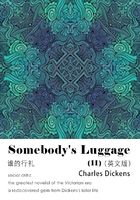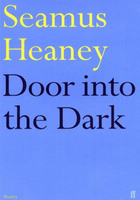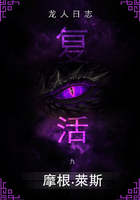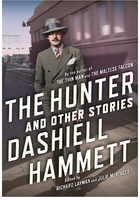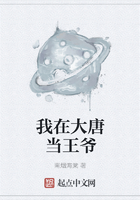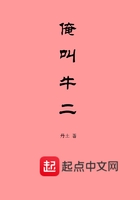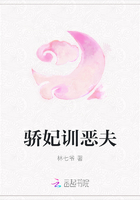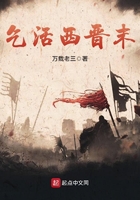Technology Overload Is Personal
Technology has given us so many gifts. Any information we need, Google lets us find within seconds. Facebook, Instagram, and Snapchat let us share our lives with distant friends and family. Our smartphones can be our running coaches, our libraries, and our meditation gurus. We no longer need to wrestle with paper maps; smartphones read detailed directions to us aloud while mapping the routes on their screens, even quickly rerouting us should we diverge from the plotted course. Uber and Lyft have made summoning a car as simple as pressing a button. Amazon can deliver ordered items within a day (and, in some cities, within two hours). Netflix streams movies to our screens for less than the cost of going to a single film at the cinema.
In the workplace, technology has forever altered our lives. E-mail allows us to communicate instantaneously and to have a permanent searchable record of our work. Slack, Facebook Messenger, and other instant-messaging applications let us chat and share files with work colleagues, and they build virtual watercoolers around which remote workers can gather to share stories, jokes, or GIFs. When we create presentations or need information, we can sift through millions of available (and often free) online images. Or we can watch videos that teach us new skills for nearly any task—from relighting a water heater's pilot flame to using the most popular computer programs for artificial intelligence (AI). We get nearly all of the news we want, at any time, for free.
Traveling on planes, we face flat-panel displays that let us flick from channel to channel or from movie to movie, keeping boredom at bay. We ride on elevators facing televisions broadcasting the news and weather, just in case we were unhappy about wasting the 30 seconds ascending or descending. Dynamic digital billboards now turn roadsides, bus stops, and city streets into carousels of capitalism. And virtual reality promises endless fully immersive adventures, enabling any of us to travel the world without moving from our chairs. The wonders never cease.
Yet a growing volume of research finds that Americans are unhappier now than they have been at any time in the past decade—and are becoming unhappier.[1]
Psychologists raise the alarm over an epidemic of loneliness consuming society.[2] Rates of teenage suicide are rising, and today's teenagers are less happy than teenagers of previous generations.[3] They are also less likely to leave the house, hold a job, and do things that were once rites of passage.[4] Smartphone addiction has made distracted driving epidemic; nearly 3,500 people died and 391,000 were injured in vehicle accidents involving distracted drivers in 2015, and such accidents are becoming more common.[5] Our stores of empathy are shrinking, and narcissism is becoming normal, both trends being potentially attributable to pervasive technology.[6],[7]
Obsessive use of social media enables constant unhealthy comparisons with the seemingly perfect lives of those we see in our social-media feeds—even when we consciously know that their lives are less than perfect. More than one-third of the U.S. population gets less than the recommended minimum seven hours of sleep a night, with many millions getting less than six hours, and some of the best sleep researchers in the world consider incessant exposure to technology a likely leading cause. Most smartphone owners, fearing being away from their devices, sleep with their devices within arm's reach.[8] Naturally, they also respond to e-mails and social-media alerts when they wake up with their phones at their sides, a behavior no one thinks is healthy. Meanwhile, a growing body of research suggests that late-night exposure to the intense blue light emitted by most computer and smartphone screens impairs production of melatonin, a chemical essential to sound sleep.
From texts to tweets to e-mail newsletters to bingewatching TV series such as Orange Is the New Black, so many things demand our attention. We are inundated with red circles and alerts and sounds, all designed to tap deep into our brains and hijack the neural pathways that enabled our ancestors to detect threats and thereby survive. What should serve us as primal alarm systems have left us trapped instead in a downward spiral of anxiety and discontent.
We know that uncontrolled consumption of technology is increasingly diverting us from our intentions, but we seem unable to stop. Research subjects even choose to receive electric shocks rather than be left alone with their thoughts and without any technologies.[9] The very engineers who built the devices that hold us rapt now express misgivings about what they have wrought (sending their own children to technology-free schools and restricting screen time at home), and the creator of the Facebook Like button now has his personal assistant use parental controls to prevent him from downloading apps to his phone.[10]
Even worse, some of the smartest people in the world are using powerful artificial-intelligence technologies specifically to devise ever newer and more effective ways to hold our attention.[11] We are collectively in the throes of a massive, harmful addiction that is the signature social issue of our time. This technology addiction is increasingly removing us from the direct experience of life, and that is consequently robbing us of our sense of peacefulness, security, stillness, and ease with ourselves. More cogently, our tech addiction has made it much harder for us to sit still or even to simply pay attention. The mechanism of this addiction is the steady, iterative diminution of our choices. This reduction of choice is a gentle slope. Like the frog boiling slowly in water, we spend increasing periods each day on our devices or interacting with technology, and our range of actual choices narrows.[12] This is not to say that we're consciously aware of such limits. To the contrary, we imagine we have never before had such a bounty of ways to amuse ourselves, learn, research, and consume information.
And it's true that we also benefit from this newfound digital store of knowledge. We can find forecasts of tomorrow's weather anywhere on the globe. We can quickly book flights or reserve tables at restaurants. We can snap pictures of our wage forms for software to convert into simple tax returns. On our phones, we can track the locations of our loved ones, and communicate in real time when we are late for appointments. And if we're involved in car accidents, we have phones with which to call for help—or applications that automatically detect that we have been in an accident.
But increasingly the choices we make are subtly (and not so subtly) manipulated by the makers of our technology in ways intended to promote the makers' profit over our individual and collective well-being.
In this book, we aim to help you understand why and how technology is making us so unhappy. And we correlate the rising use of smartphones, e-mail, social media, and other modern technologies with increasing angst, suffering, loneliness, and unhappiness. We analyze the scientific literature on how technology affects our lives. And we suggest what you can do about it.
Both of us, Vivek and Alex, came to write this book because we feel strongly about the negative effects that technology can have on our lives. Each of us has felt these effects acutely in recent years.
Neither of us hates technology. We both love it. And we could not imagine what our lives would be like without the massive benefits technology has provided to the world. We have made our careers in the technology field.
But as parents and spouses, as managers and entrepreneurs, and as people, we have felt a growing unease with technology over the past decade as it has become more deeply embedded into our day-to-day existence. As we shared the idea for our book with others, every single person we spoke to felt what we were feeling: it's a problem that affects our lives hugely.
A growing body of scientific evidence finds significant negative side effects of many of the ways we use technology and our habits in using the Internet, our smartphones, and nearly all other digital formats. This book will help you recognize the scope of the problem: how technology's many tentacles constrain and consume us in ways we fail to recognize. It describes how a form of techno-quicksand sucks us in and reduces our satisfaction at work and at home, puts us at mortal risk on the roads, and invades our most intimate moments to weave an unhealthy web of compulsion and dependency. It employs anecdotes and scientific research, and analyzes the ways in which companies, experts, scientists, and well-informed individuals are creating healthier relationships with technology and attempting to recover their equilibrium and their choices.
Ultimately, we hope to show how you can use a series of strategies and skills to build a better, more fulfilling life, one that includes both technology and happiness.
Turning the clock back is neither a realistic nor a desired option for most of us. We like Netflix. We rely on e-mail. We don't really want to read a paper map. FaceTime is a great way to stay close to people we care about. Expensify has taken a lot of the pain out of filing expenses. And online shopping is incredibly convenient. What none of us bargain for are the convenience's hidden costs, increasingly compromising our day-to-day experience and our relationships.
Our society needs to ensure that the benefits of technology use outweigh the downsides and that we allow technology into our lives only on our terms. Otherwise, we risk a dystopian future in which we are slaves to our devices; in which we allow the very things that make being human so meaningful to drown in the noise of a million dopamine signals arising from alerts, social-media posts, beeps, rings, and notifications. Without being mindful in our technology use, we face a future of endless distraction and inattention that no one wants to endure.
Some of the urgency of the warnings about technology comes from acknowledgment of a stark reality: that the current generations may be the last who remember a life before this technology invasion overwhelmed us. Children born today will see the way we interact with our technology—staring at smartphones in the presence of crying children, interrupting deep thinking and writing projects for chatter on Slack, replying to texts as we drive—as the norm and as the only way that things can be. It is our responsibility to reshape this narrative and, as grandiose as it sounds, make technology safer not only for our children but for all generations to come.
注释:
[1]J. Helliwell, R. Layard, and J. Sachs, World Happiness Report 2017, New York: Sustainable Development Solutions Network, 2017, (accessed 2 February 2018). David G. Blanchflower and Andrew Oswald, Unhappiness and Pain in Modern America: A Review Essay, and Further Evidence, on Carol Graham's Happiness for All? NBER Working Paper No. 24087, Cambridge: National Bureau of Economic Research, 2017, (accessed 2 February 2018).
[2]Jacqueline Olds and Richard S. Schwartz, The Lonely American: Drifting Apart in the Twenty-first Century, Boston: Beacon Press, 2009. American Psychological Association, “So lonely I could die,” American Psychological Association news release 5 August 2017, (accessed 2 February 2018).
[3]Jean M. Twenge, Thomas E. Joiner, Megan L. Rogers, et al., “Increases in depressive symptoms, suicide-related outcomes, and suicide rates among U.S. adolescents after 2010 and links to increased new media screen time,” Clinical Psychological Science 2018;6(1):3–17, (accessed 2 February 2018). Graeme Paton, “Overexposure to technology ‘makes children miserable,’” The Telegraph 26 October 2012, (accessed 2 February 2018). Jean M. Twenge, Gabrielle N. Martin, and W. Keith Campbell, “Decreases in psychological well-being among American adolescents after 2012 and links to screen time during the rise of smartphone technology,” Emotion 2018;18(1), (accessed 2 February 2018).
[4]Jean M. Twenge and Heejung Park, “The decline in adult activities among U.S. adolescents, 1976–2016,” Child Development 2017;00(0):1–17, abstract, (accessed 2 February 2018).
[5]“Distracted driving,” U.S. Department of Transportation (n.d.), (accessed 2 February 2018).
[6]P. Matthijs Bal and Martijn Veltkamp, “How does fiction reading influence empathy? An experimental investigation on the role of emotional transportation,” PLoS ONE 2013;8(1):e55341, (accessed 2 February 2018).
[7]Jean M. Twenge, Sara Konrath, Joshua D. Foster, et al., “Egos inflating over time: A cross-temporal meta-analysis of the Narcissistic Personality Inventory,” Journal of Personality 2008;76(4):875–901, (accessed 2 February 2018). Frederick S. Stinson, Deborah A. Dawson, Ris? B. Goldstein, et al., “Prevalence, correlates, disability, and comorbidity of DSM-IV Narcissistic Personality Disorder: Results from the Wave 2 National Epidemiologic Survey on Alcohol and Related Conditions,” Journal of Clinical Psychiatry 2008;69(7):1033–1045, (accessed 2 February 2018). Jean M. Twenge and Joshua D. Foster, “Mapping the scale of the narcissism epidemic: Increases in narcissism 2002–2007 within ethnic groups,” Journal of Research in Personality 2008;42(6):1619–1622, (accessed 2 February 2018). Jean M. Twenge and Josha D. Foster, “Birth cohort increases in narcissistic personality traits among American college students, 1982–2009,” Social Psychological and Personality Science 2010;1(1):99–106, (accessed 2 February 2018). Sara H. Konrath, Edward H. O'Brien, and Courtney Hsing, “Changes in dispositional empathy in American college students over time: A meta-analysis,” Personality and Social Psychology Review 2010;15(2):180–198. Jean M. Twenge, “The evidence for Generation Me and against Generation We,” Emerging Adulthood 2013;1(1):11–16, (accessed 2 February 2018). Jean M. Twenge, “Overwhelming evidence for Generation Me: A reply to Arnett,” Emerging Adulthood 2013;1(1):21–26, (accessed 2 February 2018). Keith Oatley, “Fiction: Stimulation of social worlds,” Trends in Cognitive Sciences 2016;20(8):618–628, (accessed 2 February 2018). Joe Pierre, “The narcissism epidemic and what we can do about it: Looking in the mirror at our love of narcissists, part 3,” Psychology Today 8 July 2016, (accessed 2 February 2018).
[8]Trends in Consumer Mobility Report 2015, Bank of America 2015, (accessed 2 February 2018).
[9]Timothy D. Wilson, David A. Reinhard, Erin C. Westgate, et al., “Just think: The challenges of the disengaged mind,” Science 2014;345(6192):75–77, (accessed 2 February 2018).
[10]Paul Lewis, “‘Our minds can be hijacked’: The tech insiders who fear a smartphone dystopia,” The Guardian 6 October 2017, (accessed 2 February 2018).
[11]Scott Berinato, “Inside Facebook's A.I. workshop,” Harvard Business Review 19 July 2017, (accessed 2 February 2018).
[12]Jacqueline Howard, “Americans devote more than 10 hours a day to screen time, and growing,” CNN 29 July 2016, (accessed 2 February 2018). Sarah Perez, “U.S. consumers now spend 5 hours per day on mobile devices,” TechCrunch 3 March 2017, (accessed 2 February 2018).

